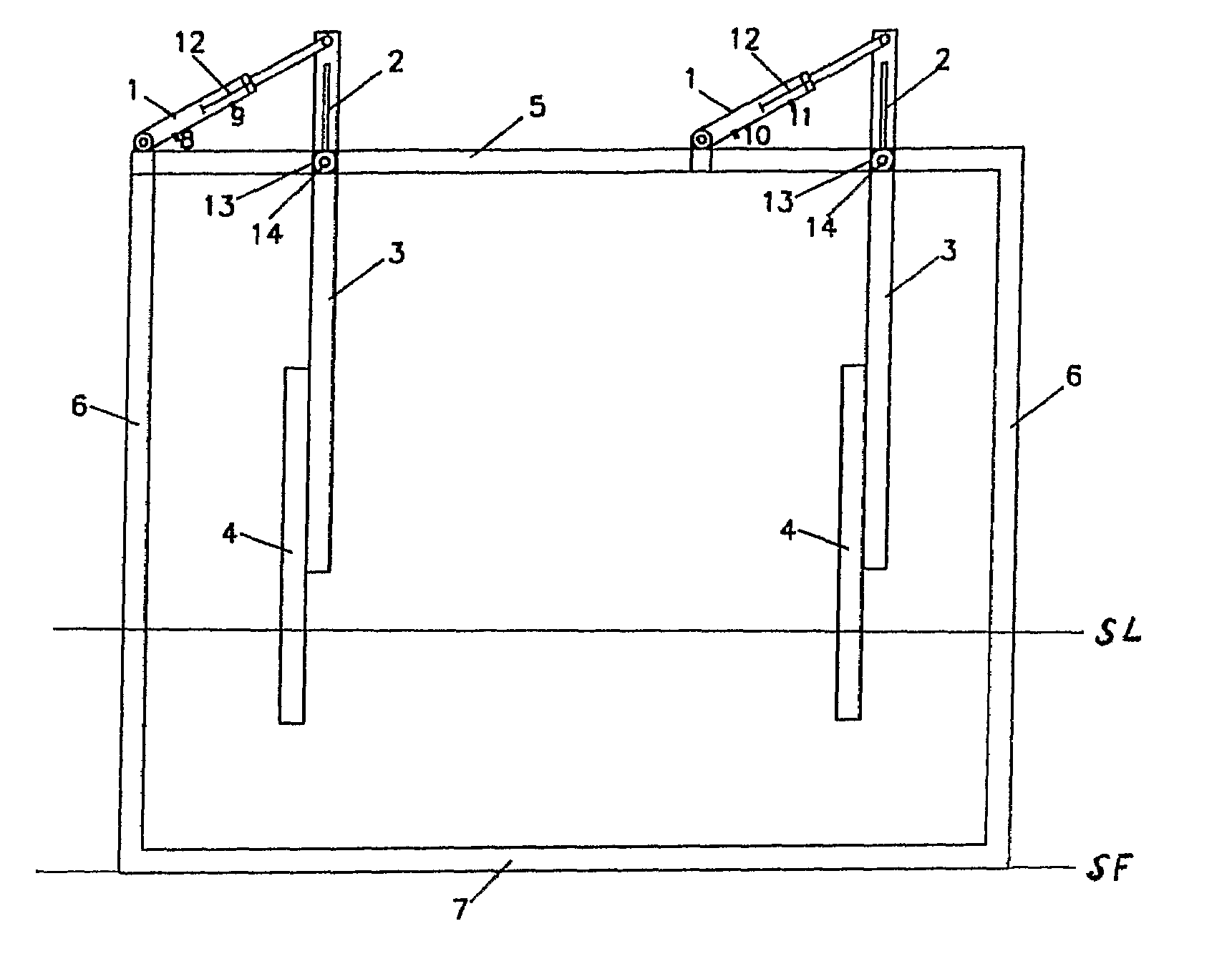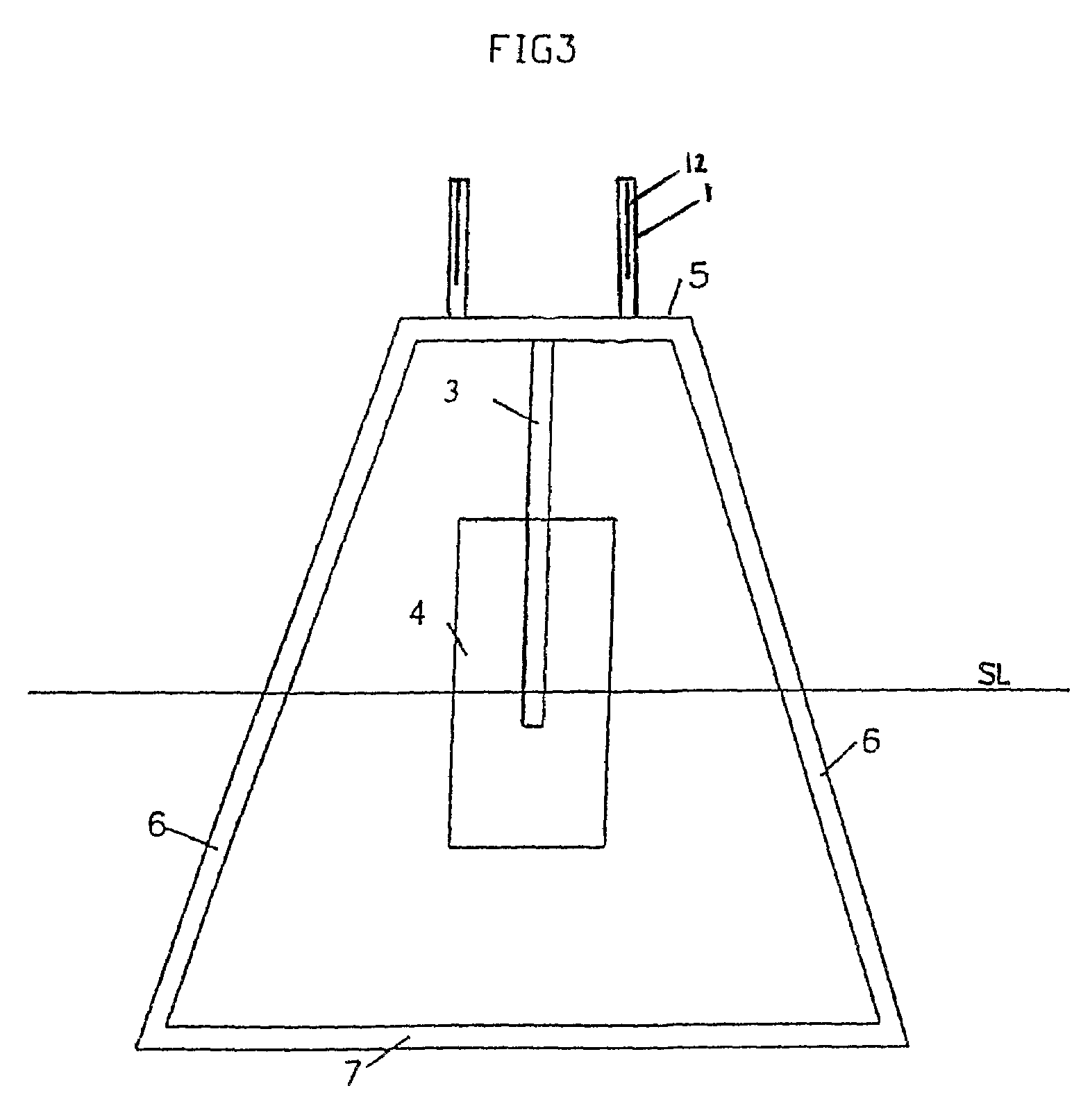Wave power plant
a power plant and wave technology, applied in the field of plants, can solve the problems of not fully utilizing the power of the wave, complicated system, and inability to utilize the energy of the wave's components that move under the wave, and achieve the effect of maximum energy production and little for
- Summary
- Abstract
- Description
- Claims
- Application Information
AI Technical Summary
Benefits of technology
Problems solved by technology
Method used
Image
Examples
Embodiment Construction
[0087]With reference to FIG. 1, the system in accordance with the present invention comprises a support structure 7 consisting of legs 6 carrying an upper frame 5. The legs are anchored in the sea floor SF. SL is the sea level.
[0088]On the upper frame there are mounted at least two paddle units, which will be described in more detail below, Each paddle unit comprises a paddle rod 3 connected to a housing 13. Within the housing there is mounted an axle 14, which is rigidly secured to the upper frame.
[0089]Each paddle unit comprises a paddle rod 3 rigidly connected to the housing 13. The housing is mounted around an axle 14, secured to the upper frame 14. A rotational movement of the housing with respect to the axle is accomplished by virtue of a pivotal movement of the paddle rod 3 with the plate 4, driven by a wave.
[0090]The lower extremity of the paddle rod 3 is terminated by a paddle plate 4, which encounters the wave and is driven thereby. The height of the legs 6 and also the di...
PUM
 Login to View More
Login to View More Abstract
Description
Claims
Application Information
 Login to View More
Login to View More - R&D
- Intellectual Property
- Life Sciences
- Materials
- Tech Scout
- Unparalleled Data Quality
- Higher Quality Content
- 60% Fewer Hallucinations
Browse by: Latest US Patents, China's latest patents, Technical Efficacy Thesaurus, Application Domain, Technology Topic, Popular Technical Reports.
© 2025 PatSnap. All rights reserved.Legal|Privacy policy|Modern Slavery Act Transparency Statement|Sitemap|About US| Contact US: help@patsnap.com



